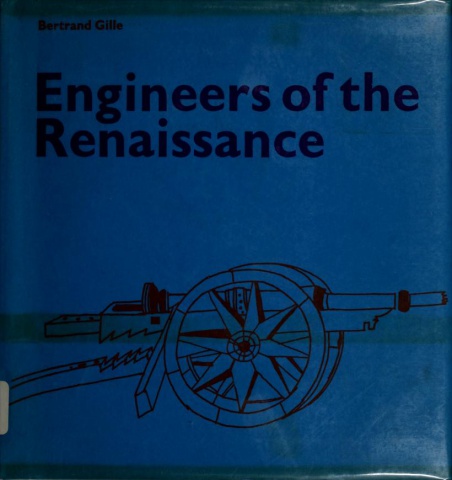Sylvia Berryman: The Mechanical Hypothesis in Ancient Greek Natural Philosophy (2009)
Filed under book | Tags: · antiquity, astronomy, automata, engineering, history of science, history of technology, machine, mechanics, philosophy, physics, science, technology

“It has long been thought that the ancient Greeks did not take mechanics seriously as part of the workings of nature, and that therefore their natural philosophy was both primitive and marginal. In this book Sylvia Berryman challenges that assumption, arguing that the idea that the world works ‘like a machine’ can be found in ancient Greek thought, predating the early modern philosophy with which it is most closely associated. Her discussion ranges over topics including balancing and equilibrium, lifting water, sphere-making and models of the heavens, and ancient Greek pneumatic theory, with detailed analysis of thinkers such as Aristotle, Archimedes, and Hero of Alexandria. Her book shows scholars of ancient Greek philosophy why it is necessary to pay attention to mechanics, and shows historians of science why the differences between ancient and modern reactions to mechanics are not as great as was generally thought.”
Publisher Cambridge University Press, 2009
ISBN 0521763762, 9780521763769
286 pages
Review (Serafina Cuomo, Aestimatio, 2012)
Review (Jean De Groot, Metascience, 2012)
Talk by the author (video, at UBC, 104 min, 2011)
Matthew Wisnioski: Engineers for Change: Competing Visions of Technology in 1960s America (2012)
Filed under book | Tags: · 1960s, 1970s, activism, computing, education, engineering, history of computing, history of technology, labour, luddism, military, science, space, technology

“In the late 1960s an eclectic group of engineers joined the antiwar and civil rights activists of the time in agitating for change. The engineers were fighting to remake their profession, challenging their fellow engineers to embrace a more humane vision of technology. In Engineers for Change, Matthew Wisnioski offers an account of this conflict within engineering, linking it to deep-seated assumptions about technology and American life.
The postwar period in America saw a near-utopian belief in technology’s beneficence. Beginning in the mid-1960s, however, society—influenced by the antitechnology writings of such thinkers as Jacques Ellul and Lewis Mumford—began to view technology in a more negative light. Engineers themselves were seen as conformist organization men propping up the military-industrial complex. A dissident minority of engineers offered critiques of their profession that appropriated concepts from technology’s critics. These dissidents were criticized in turn by conservatives who regarded them as countercultural Luddites. And yet, as Wisnioski shows, the radical minority spurred the professional elite to promote a new understanding of technology as a rapidly accelerating force that our institutions are ill-equipped to handle. The negative consequences of technology spring from its very nature—and not from engineering’s failures. “Sociotechnologists” were recruited to help society adjust to its technology. Wisnioski argues that in responding to the challenges posed by critics within their profession, engineers in the 1960s helped shape our dominant contemporary understanding of technological change as the driver of history.”
Publisher MIT Press, 2012
ISBN 0262018268, 9780262018265
296 pages
via a2
Interview with the author (Carla Nappi, New Books in Science, Technology, and Society, audio, 1h)
Review (Caroll Pursell, The American Historical Review, 2014)
Review (Kevin T. Baker, The Sixties, 2013)
Review (Stephen H. Unger, 2013)
Bertrand Gille: Engineers of the Renaissance (1964–) [French, English]
Filed under book | Tags: · art, art history, engineering, history of science, history of technology, machine, mechanics, renaissance, science, technology

“In his reconstruction of Renaissance technology informed by research into little-known manuscripts from libraries across Europe, Bertrand Gille emphasises the close continuity of technical invention from antiquity (in particular, the Alexandrian Greeks), through the mediaeval period (in particular, the Germans), to its brief but brilliant high flaring among the Italians of the fifteenth century. The engineers were conscious of embodying the Archimedean tradition, the tradition of “give me a place to stand and I can move the world.” It was an age marked by a close and natural mutuality between the technical and the fine arts, and by the first real union of science and technology, whose issue was a permanent enrichment of both. Science gave to engineering a new sophistication of mathematical precision, and the working models constructed for mechanical inventions prepared the way for a truly experimental science, as later developed by the generation of Galileo.
As might be expected, the figure of Leonardo da Vinci looms large in this book. It is the author’s contention, based on the documents he has uncovered, that Leonardo’s originality as an engineer has been greatly overestimated, that in fact he borrowed and adapted freely from the work of this anonymous and little-known contemporaries, that many of his ideas are already prefigured in the mediaeval period. Nevertheless, although he rests on the foothills leading up to him, he still towers above them as the consummate technical artist.”
Publisher Hermann, Paris, 1964
239 pages
English edition
Publisher MIT Press, 1966
256 pages
Reviews: Alex Keller (Technology and Culture, 1965), Harry Woolf (Science, 1968), M. Daumas (Revue d’Histoire des sciences et de leurs application, 1964, FR).
Wikipedia (FR)
Les ingénieurs de la Renaissance (French, 1964, 8 MB, added on 2018-12-27)
Engineers of the Renaissance (English, 1966, 8 MB, updated on 2018-12-27)

